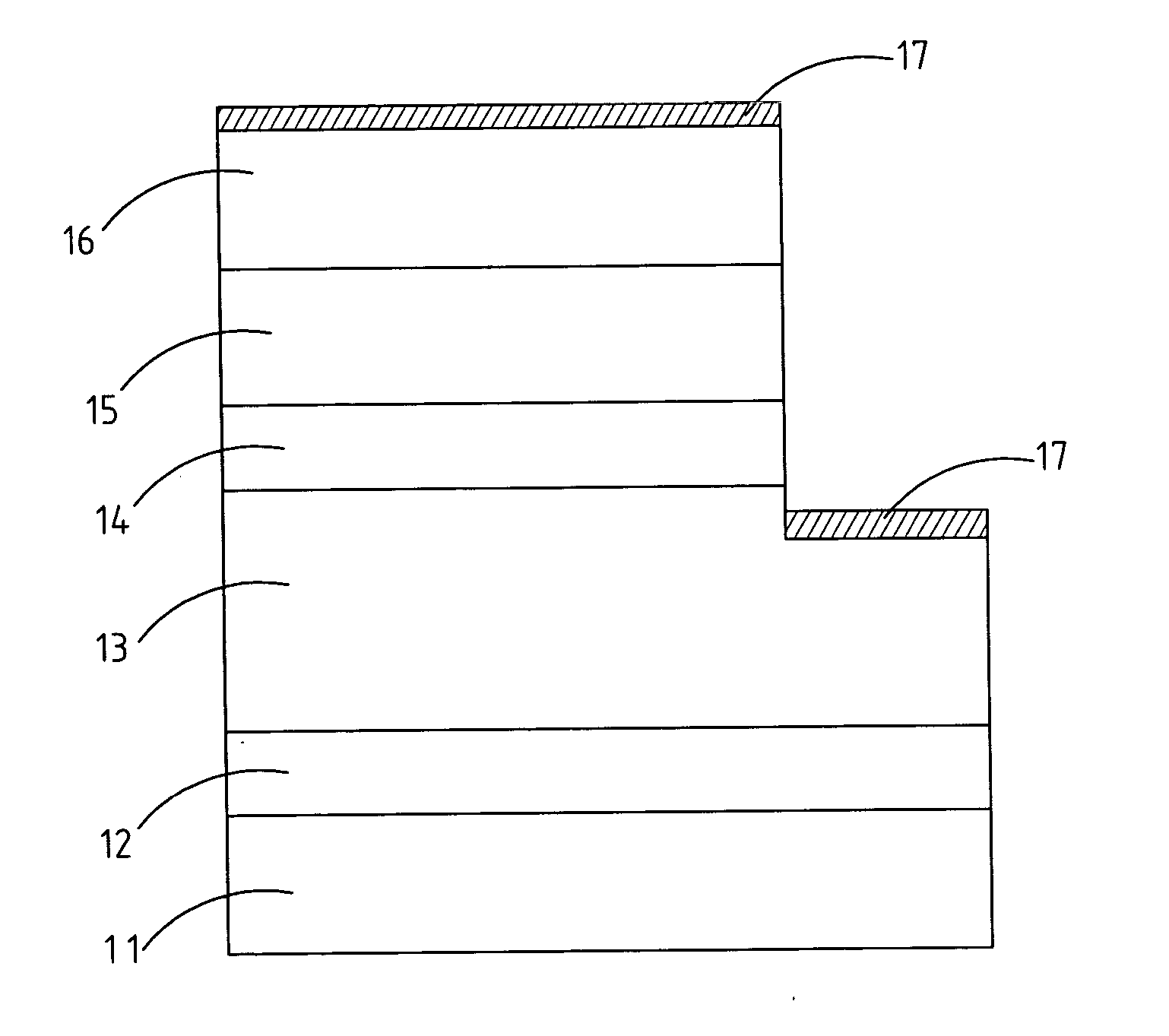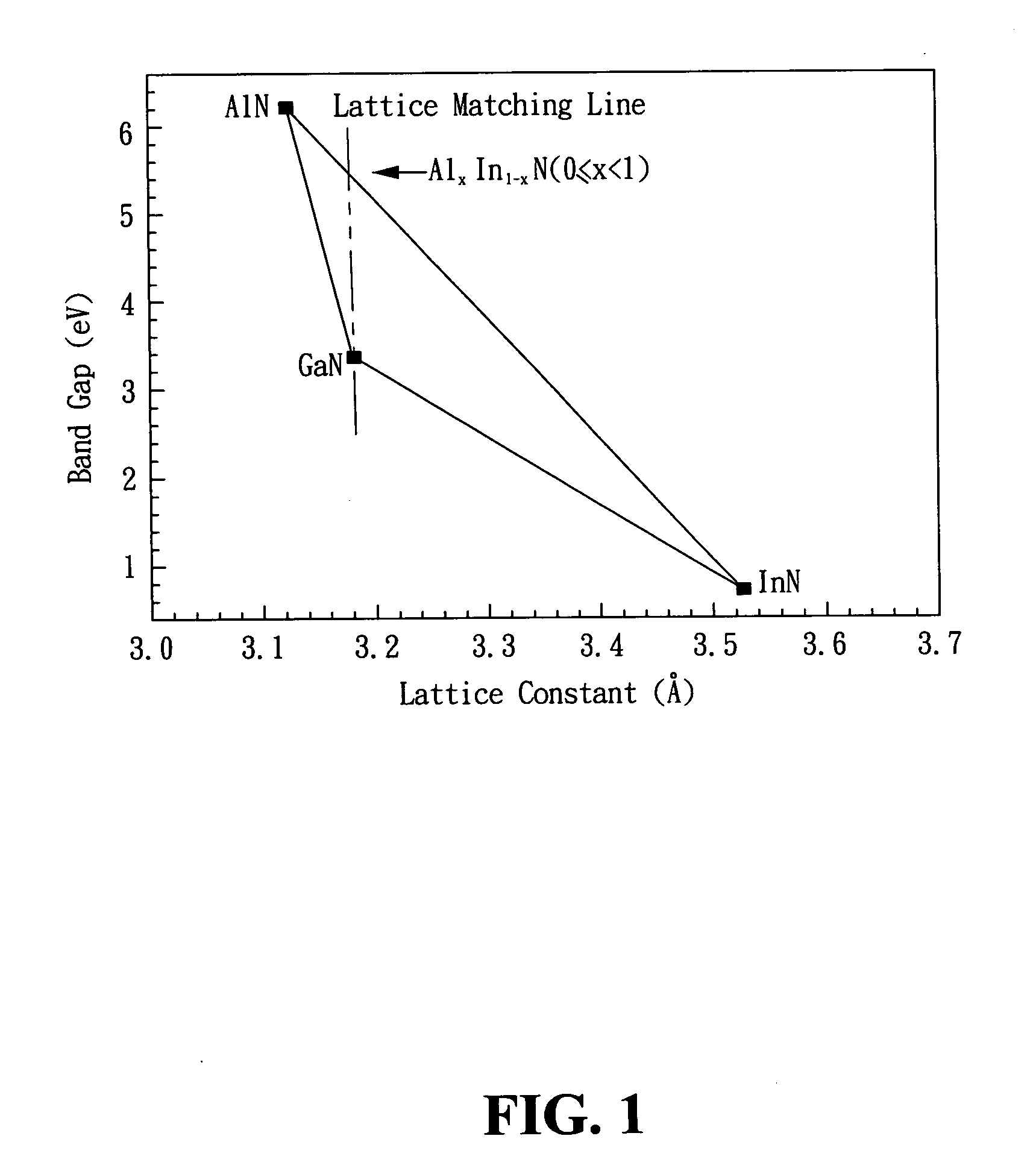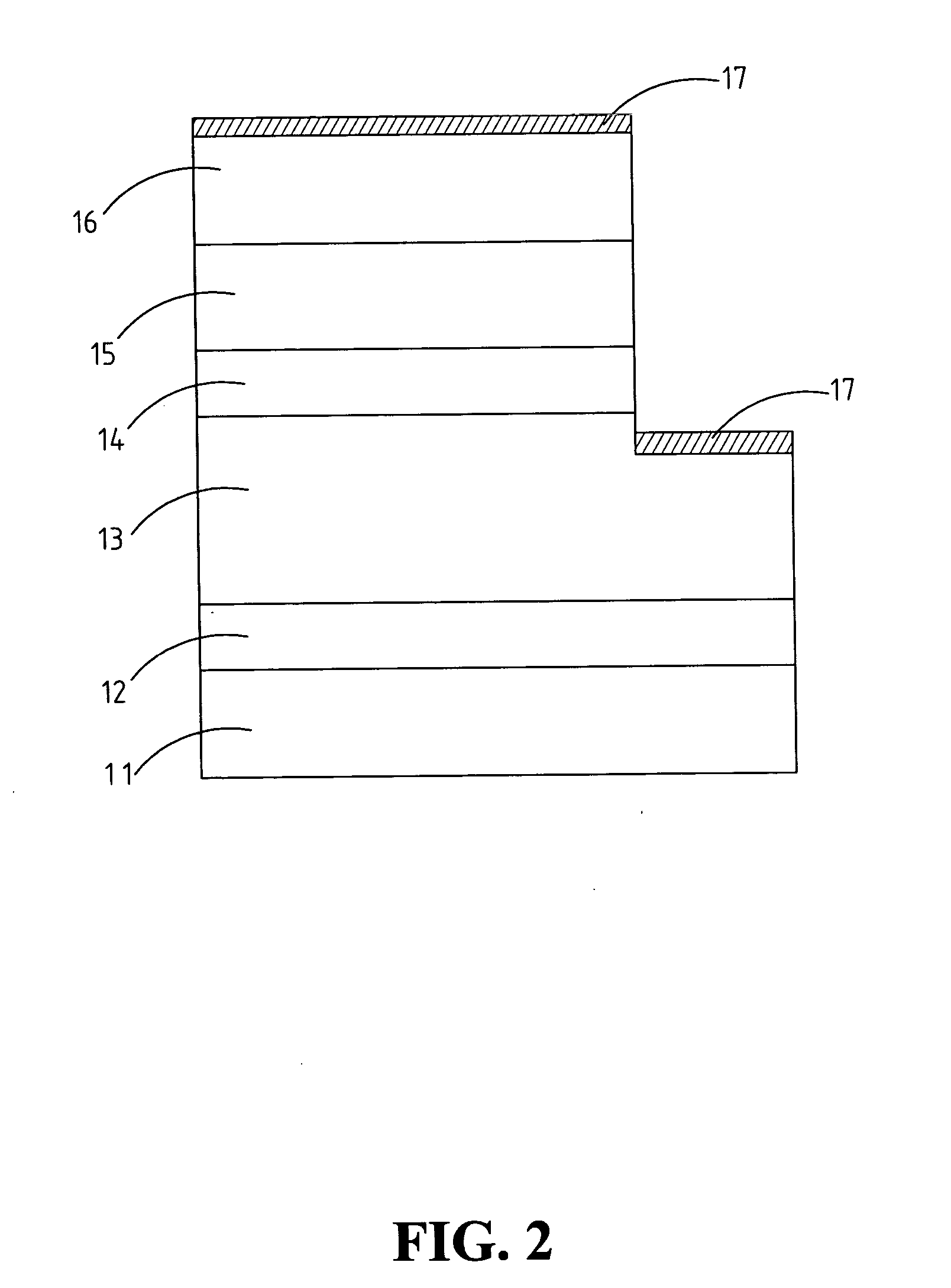Gallium-nitride based light emitting diode structure
a light-emitting diode and gallium nitride technology, applied in the direction of basic electric elements, electrical equipment, semiconductor devices, etc., can solve the problems of epitaxy structure damage, light-emitting characteristics of led epitaxy damage, etc., to increase the lighting efficiency of gan-based leds, the effect of low growth
- Summary
- Abstract
- Description
- Claims
- Application Information
AI Technical Summary
Benefits of technology
Problems solved by technology
Method used
Image
Examples
first embodiment
[0014]FIG. 2 is a schematic diagram showing the GaN-based LED structure according to the present invention.
[0015] As shown in FIG. 2, the GaN-based LED structure contains a substrate 11, a buffer layer 12, a n-type GaN contact layer 13, an active layer 14, a p-type cladding layer 15, and a p-type contact layer 16.
[0016] The substrate 11 is made of sapphire (aluminum-oxide monocrystalline). The buffer layer 12 is located upon the substrate 11 and is made of aluminum-gallium-indium-nitride (Al1-a-bGaaInbN, 0≦a, b13 is located upon the buffer layer 12. The active layer 14 is located upon the n-type GaN contact layer 13 and is made of InGaN. The p-type cladding layer 15 on top of the active layer 14 is made of magnesium (Mg)-doped Al1-cIncN (015 is grown under a temperature between 600° C. and 1200° C.
[0017] The p-type contact layer 16 on top of the p-type cladding layer 15 is made of Mg-doped GaN.
[0018] As shown in FIG. 2, the GaN-based LED structure according to the first embodimen...
second embodiment
[0019]FIG. 3 is a schematic diagram showing the GaN-based LED structure according to the present invention.
[0020] As shown in FIG. 3, the GaN-based LED structure contains a substrate 21, a buffer layer 22, a n-type GaN contact layer 23, an active layer 24, a p-type cladding layer 25, and a p-type contact layer 26.
[0021] The substrate 21 is made of sapphire (aluminum-oxide monocrystalline). The buffer layer 22 is located upon the substrate 21 and is made of Al1-d-eGadIneN (0≦d, e23 is located upon the buffer layer 22. The active layer 24 is located upon the n-type GaN contact layer 23 and is made of InGaN. The p-type cladding layer 25 on top of the active layer 24 is made of Al1-fInfN (025 is grown under a temperature between 600° C. and 1200° C.
[0022] The p-type contact layer 26 on top of the p-type cladding layer 25 is made of Mg-doped GaN.
[0023] As shown in FIG. 3, the GaN-based LED structure according to the second embodiment of the present invention can further contain an ele...
third embodiment
[0024]FIG. 4 is a schematic diagram showing the GaN-based LED structure according to the present invention.
[0025] As shown in FIG. 4, the GaN-based LED structure contains a substrate 31, a buffer layer 32, a n-type GaN contact layer 33, an active layer 34, a p-type double cladding layer 35, and a p-type contact layer 36.
[0026] The substrate 31 is made of sapphire (aluminum-oxide monocrystalline). The buffer layer 32 is located upon the substrate 31 and is made of Al1-g-hGagInhN (0≦g, h33 is located upon the buffer layer 32. The active layer 34 is located upon the n-type GaN contact layer 33 and is made of InGaN. The p-type double cladding layer 35 on top of the active layer 34 further contains a first cladding layer 351 and a second cladding layer 352. The first cladding layer 351 on top of the active layer 34 is made of Al1-iIniN (0351 is grown under a temperature between 600° C. and 1200° C. The second cladding layer 352 on top of the first cladding layer 351 is made of Mg-doped ...
PUM
 Login to View More
Login to View More Abstract
Description
Claims
Application Information
 Login to View More
Login to View More - R&D
- Intellectual Property
- Life Sciences
- Materials
- Tech Scout
- Unparalleled Data Quality
- Higher Quality Content
- 60% Fewer Hallucinations
Browse by: Latest US Patents, China's latest patents, Technical Efficacy Thesaurus, Application Domain, Technology Topic, Popular Technical Reports.
© 2025 PatSnap. All rights reserved.Legal|Privacy policy|Modern Slavery Act Transparency Statement|Sitemap|About US| Contact US: help@patsnap.com



